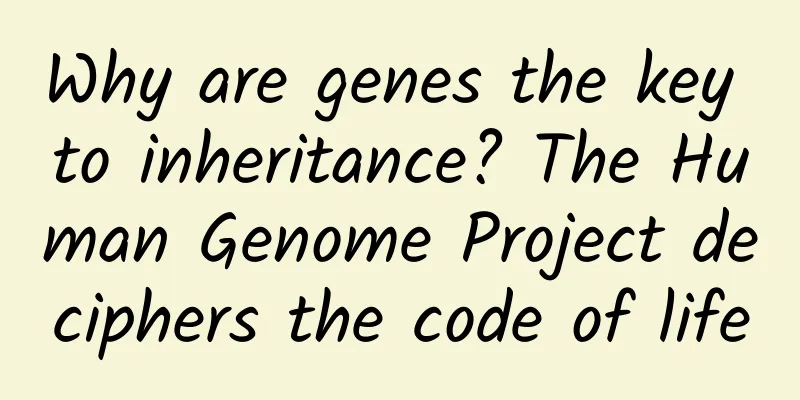When a person dies, is the body completely dead? Some genes are still trying to revive the human body

|
Death represents the end, because everything we have, material or non-material, needs to be supported by life. Without life, everything will disappear. Because death represents the end of everything, we naturally think that when a person dies, the body is completely dead, but in fact this is not the case. For a period of time after a person is declared dead, some of the genes in the body will become more active, and the purpose of these genes is only one, that is, to try to revive the human body. This sounds a bit bizarre and scary. If a person can really be resurrected by the genes in the body, wouldn't that make him a "zombie"? Don't worry, these genes are just trying to revive the human body, and this attempt will eventually end in failure. Modern medicine usually uses "brain death" as the criterion for death, but the brain death mentioned here does not actually refer to the death of the brain. The so-called "brain death" actually refers to the death of the brain stem. The brain stem controls the activities of our internal organs, including breathing. When the brain stem dies, the internal activities of the body that maintain life will come to an abrupt end, and the body will inevitably die. However, after the brain stem dies, the body is not completely dead. Scientists in Washington, USA, have found that the messenger RNA in dead animals will become abnormally active. Messenger RNA plays an important role in protein synthesis. By tracking these abnormally active RNAs, scientists have found that most of these genes that are still active after death come from the brains of animals, and the activity of some of these genes will reach a peak 4 days after death, and then gradually decrease. There are three main types of genes that remain active after death. The first type is genes within neuronal cells. In fact, scientists have long discovered this part of the genes. Neurons in the body are mainly responsible for receiving and transmitting information. Therefore, after the death of the brain stem, the deceased may still be able to hear the sounds of the outside world. In theory, since the neurons are not dead, the deceased should also be able to feel other external stimuli, such as pain. However, the activity of neuron cell genes does not last long. It begins to drop sharply about 12 hours after death. At this time, another gene takes over the baton, which is the glial cell gene. Glial cells are the little helpers of neurons. Their main function is to assist and repair neurons. 12 hours after death, the number of neuronal cells begins to decrease in large numbers, so the neuronal glial cells think that there is a problem with the neuronal cells and start to repair the neurons at full capacity, so the neuronal glial cell genes begin to become active. As the number of neurons decreases, the activity of neuron and glial cell genes increases. When the number of neurons is reduced to a minimum, the activity of glial cell genes reaches a peak, and then decreases and dies. The third type of genes that remain active after death are called "housekeeping genes" by scientists. Their job is to protect body cells from being destroyed. The activity of these genes can be maintained for a long time after death and reaches a peak on the fourth day. Whether it is neuron cell genes or housekeeping genes, they have only one ultimate goal, which is to do their best to revive the body. Why are their efforts to revive the body futile? Because the brain stem is dead. Modern medicine can rescue many emergency situations of the body, and even cardiac arrest can be restarted, but there is no way to treat the dead brain stem. It can be said that the death of the brain stem is irreversible. When the brain stem dies, the body's autonomous breathing cannot be restored, and if breathing cannot be restored, it cannot provide energy for the body. No matter what these genes that are still active after death do, they are just consuming the remaining energy in the body. When the energy in the body is exhausted, everything will naturally return to silence. Therefore, in theory, not only is it impossible for people to be resurrected, even if they want to become zombies, they cannot do it. Whether it is a living thing or a non-living thing, it must consume energy if it wants to move. After the death of the brain stem, the living body cannot resume autonomous breathing, nor can it supply energy to the body's cells, so the body cannot acquire the ability to move. It can be seen that those cells that are still active after the death of the body are just showing the last "stubbornness" of life, and have no practical significance. However, it has no practical significance for the deceased themselves, but it is still quite meaningful for the relatives and friends of the deceased, because we know that they may still retain the ability to receive external information after death, so some things that we didn't have time to say, we can still tell them, which can make up for some regrets. Moreover, understanding and studying these genes that attempt to revive the human body may also bring new developments to modern medicine. For more information, please follow the official account: sunmonarch |
<<: There is a Longquanyi in Chengdu
>>: How was the British throne passed down?
Recommend
Will iOS 9 become more stable?
iOS has undergone tremendous changes since iOS 7,...
Don't be careless! These "small bumps" may induce cancer...
Expert of this article: Zhou Xiaobo, Doctor of Me...
What are the benefits and advantages of Douyin Blue V certification? Introduction to the advantages of Douyin Blue V certification
In fact, for many Douyin sellers, they certainly ...
I'll tell you at 3 o'clock! Why does your app have no users?
Recently, I have come into contact with some App ...
Pinduoduo event operation analysis!
On the eve of Double Eleven, Pinduoduo launched a...
Zhejiang added 1 new local case and the country added 54 new imported cases!
From 0:00 to 24:00 on March 26, 31 provinces (aut...
Apple lost as much as Baidu in 5 days, Cook should wake up
In China, Apple rarely invites celebrities to adv...
Guangzhou WeChat image and text recognition mini program function, how much does it cost to develop an image and text recognition mini program?
For "self-media" personnel, they are wor...
A "Huashan Sword Contest" in the organic chemistry community has produced fruitful scientific and spiritual fruits
In the field of organic chemistry, a long-lasting...
Finally I experienced a good place to taste tea in Changsha. The old driver brought me here. It was really good after the experience. I would like to share it with you.
Changsha is a good place for tea tasting and drin...
【2021】Zhou Sicheng Team Season 4
: : : : : : : : : : : : : : : .mp4 524.56M | | ├──...
Foxconn says it won't run away, but suspicions persist
The topic of manufacturing has attracted particul...
In the "backyard" of the Milky Way, is there a cosmic "spider" with a terrifying appearance?
The Milky Way's Iron Neighbor! Is It Actually...
This may be the only lizard with an oxygen tank
Produced by: Science Popularization China Author:...
Zhang Qi: Digging for traffic and exploring omni-channel growth, one lesson to easily get the code for full network growth
Zhang Qi: Digging for gold from traffic and explo...









